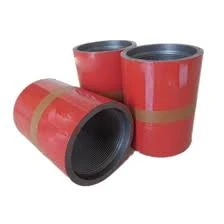Understanding Irrigation Pipe Couplings for Efficient Water Management and Installation Techniques
Understanding Irrigation Pipe Couplings Essential Components for Efficient Water Management
Irrigation is a crucial element in agriculture, enabling the efficient distribution of water to crops in various climates and regions. A significant component of any irrigation system is the coupling, which is essential for connecting pipes and ensuring a seamless flow of water. This article delves into the significance of irrigation pipe couplings, their types, materials, and how they contribute to effective water management.
What are Irrigation Pipe Couplings?
Irrigation pipe couplings are fittings used to join two sections of piping in an irrigation system. They facilitate the connection of different lengths of pipes, allowing water to flow from the source to the sprinklers or drip lines that hydrate the crops. Proper coupling ensures minimal leakage and pressure loss, which is vital for maintaining the system's efficiency.
Types of Irrigation Pipe Couplings
There are several types of couplings available, each designed for specific applications and pipe materials. The most common types include
1. Rigid Couplings These provide a permanent connection and are generally used for fixed installations. They are often made of metal or hard plastics and are ideal for high-pressure systems.
2. Flexible Couplings Designed to accommodate movements and vibrations within the pipework, flexible couplings are typically used in areas where ground movement may occur. They can absorb shocks and allow for adjustments, making them suitable for various terrains.
3. Compression Couplings These are easy to install and are often used for joining plastic pipes. They work by compressing a rubber gasket around the pipe, creating a leak-proof seal. Compression couplings are particularly useful for DIY irrigation projects.
4. Barbed Couplings These are often used in drip irrigation systems. They feature barbs that grip the inside of the pipe, providing a secure connection. They are usually found in smaller diameter pipes and are highly effective for conveying water to delicate irrigation systems.
irrigation pipe coupling

5. Union Couplings These couplings allow for easy disconnection of pipe segments. They are especially useful for maintenance or replacement of parts in an irrigation system without having to cut the pipe.
Materials Used in Irrigation Couplings
The material of the coupling affects its durability and suitability for different conditions. Common materials include
- PVC (Polyvinyl Chloride) Lightweight and resistant to chemicals, PVC is widely used in irrigation systems for its affordability and ease of installation. - HDPE (High-Density Polyethylene) Known for its flexibility and resistance to impact, HDPE is ideal for underground irrigation systems and can handle varying degrees of pressure.
- Metal Steel and brass couplings are used in high-pressure requirements and offer excellent strength and longevity.
- Rubber Rubber seals are often included in couplings to ensure a watertight fit. These may be used in combination with other materials to enhance flexibility and durability.
Importance of Proper Coupling in Irrigation Systems
Properly installed and maintained couplings are critical for the efficiency of an irrigation system. Poorly fitted couplings can lead to leaks, resulting in water loss and increased operational costs. Moreover, leaks can cause soil erosion and uneven water distribution, ultimately affecting crop yield. By ensuring that all couplings are appropriate for the specific application and are installed correctly, farmers can optimize water usage and promote sustainable agricultural practices.
Conclusion
Irrigation pipe couplings are indispensable for the effective management of irrigation systems. Understanding the types, materials, and functions of these components allows agricultural practitioners to design and maintain systems that maximize water efficiency and crop productivity. As climate change continues to impact global water resources, the role of effective irrigation, supported by proper couplings, becomes increasingly vital in achieving food security and sustainable farming practices. By investing in quality couplings and employing best practices in irrigation design, farmers can contribute to a more sustainable agricultural future.
-
Unlock the Benefits of Pup Joints for Your OperationsNewsOct.31,2024
-
The Quality of Casing Couplings from ChinaNewsOct.31,2024
-
The Essential Role of Pup Joints in Drilling OperationsNewsOct.31,2024
-
The Benefits of Tubing Couplings for Your ProjectsNewsOct.31,2024
-
Enhance Your Drilling Operations with Tubing Pup JointsNewsOct.31,2024
-
Elevate Your Drilling Operations with Tubing CrossoversNewsOct.31,2024







